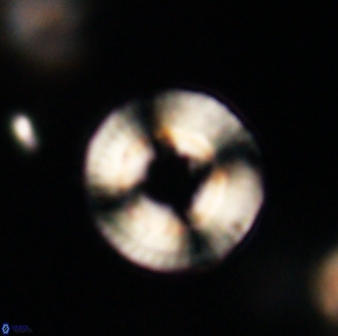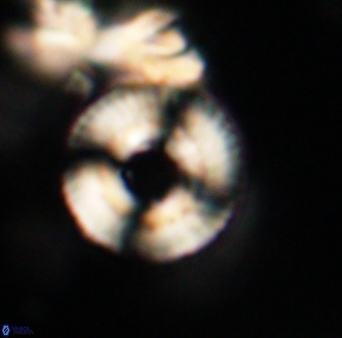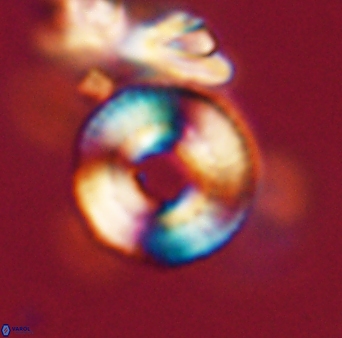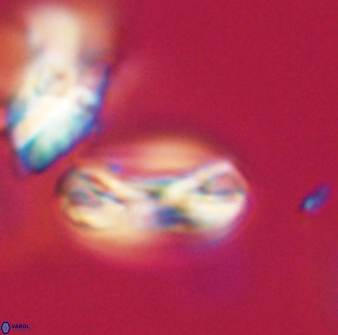Heliotrochus trypa
Set number: 2336
-
1
-
2
-
3
-
4
-
5
-
6
-
7
-
8
-
9
-
10
-
11
-
12
-
13
-
14
-
15
-
16
10µm
Holotype in the mobile mount.
Heliotrochus typra Bowman & Varol, 2021
A large form of Heliotrochus having two discs of equal diameter, a narrower, very low column and a central opening surrounded by a narrow tube cycle.
From Greek trypa, hole – referring to the large opening exhibited in the central area of the species.
Overall height: 3.36μm; Proximal Disc diameter: 8.38μm; Median Disc diameter: 8.38μm; Column diameter: 6.67μm; Central Opening diameter: 2.29μm; Tube Cycle width: 1.08μm.
Large (7.0–10.0μm) circular species of Heliotrochus comprised two discs, a column and a central opening surrounded by a narrow tube cycle. The discs are flat, thin, and relatively wide, and display equal diameters (better seen in the side-view). The diameter of the low column appears narrower than the diameter of the discs. The thin or low character representing the discs and column produces a compressed appearance in the side-view. In plan view, the discs and column are striated, and the central area consists of a mid-sized opening and a narrow tube cycle.
In cross-polarised light, the extinction lines show a dextrogyre pattern on the distal side, but laevogyre-type extinction lines reflect the proximal side. When observed using a gypsum plate, the distal side shows alignment of the horizontal axis with the blue region. In contrast, the orientation of the vertical axis and the blue section typify the proximal side. The disc and column are birefringent in plan view and side view. The discs and column display a yellowish-whiteish birefringence colour in the plan-view.
Heliotrochus trypa exhibits two discs of equal diameter, but Heliotrochus steurbautii and Heliotrochus kleinpellii have discs that are unequal in diameter. Also, Heliotrochus trypa displays a moderately wide central opening, whereas Heliotrochus steurbautii and Heliotrochus kleinpellii have a narrow central opening with a plug/tube cycle. Heliotrochus typra possesses a narrower column than the width of the discs and a tube cycle that encloses the central opening. In contrast, species of Tonromeinia display discs and a column of equal diameter but lack a tube cycle. As with all Heliotrochus, this species is almost exclusively observed only in the plan-view because the compressed nature associated with the low column and thin discs restricts the distribution of mass within the height of the species, which causes limited observation of specimens in side-view.
Bowman, A. R. & Varol, O. 2021. A Taxonomic Revision of Heliolithaceae - Applications in Resolving the Problematic Calcareous Nannofossil Biostratigraphy of the Paleocene. In: M. Montenary, M. (Ed.). Calcareous nannofossil biostratigraphy of the Stratigraphy and timescales. 6: 43-223.





